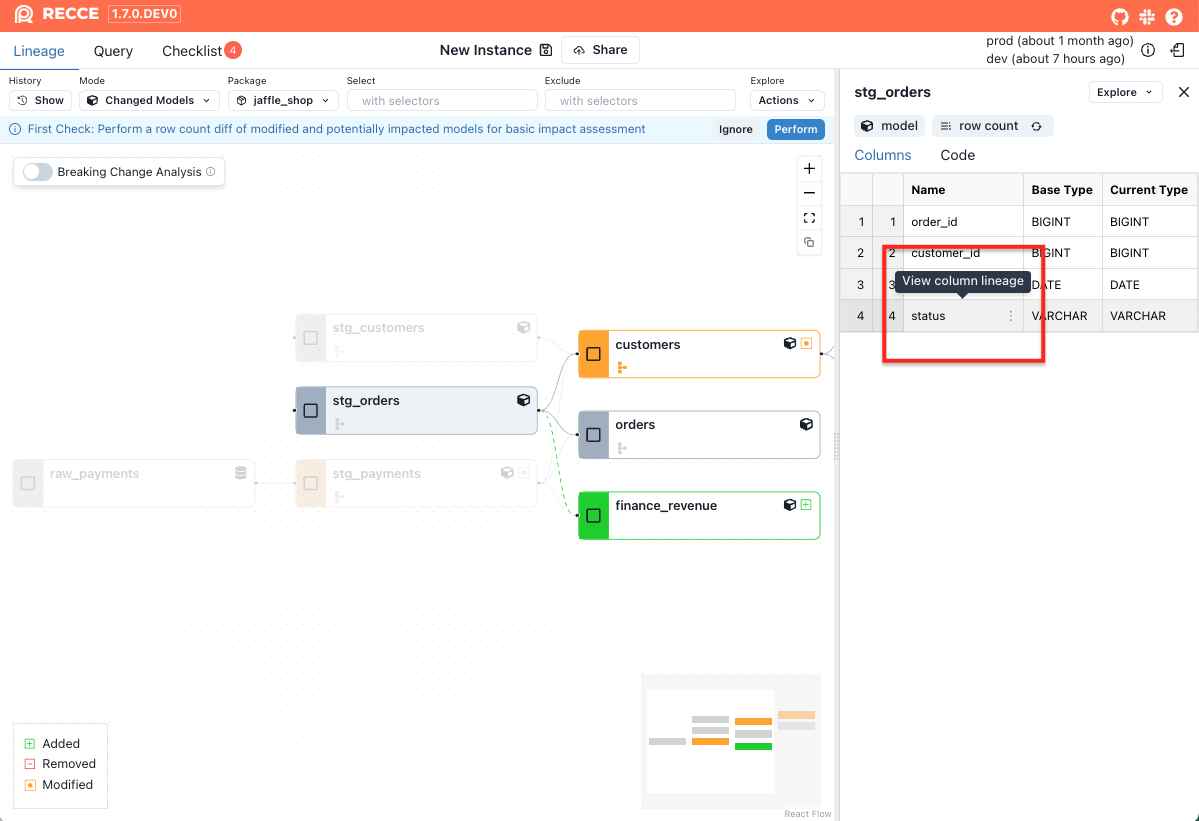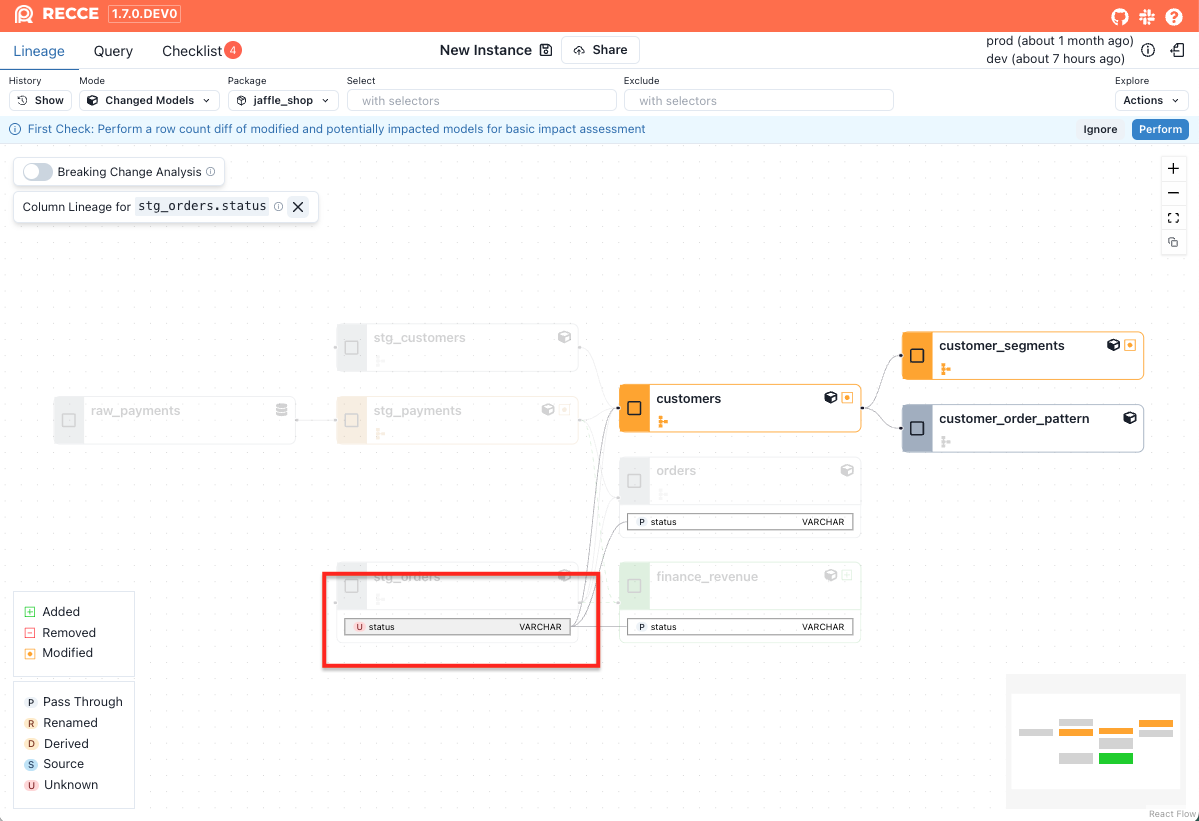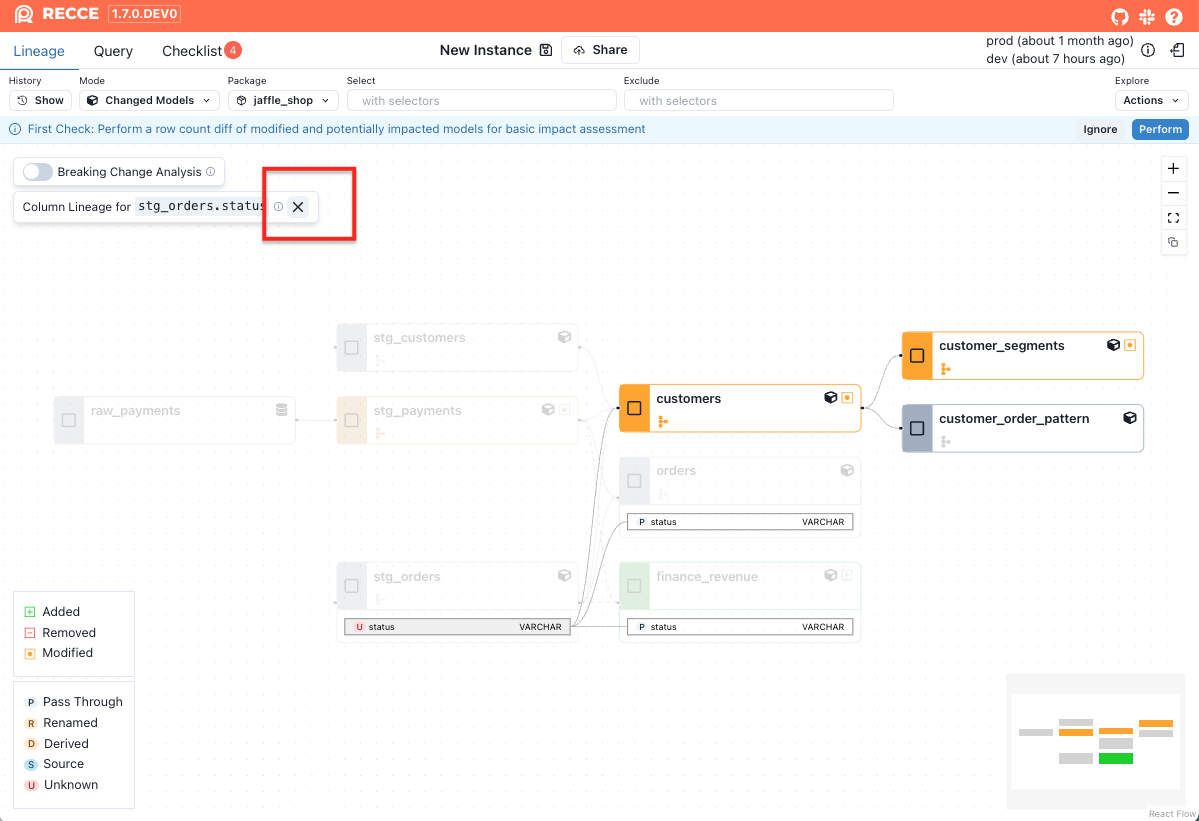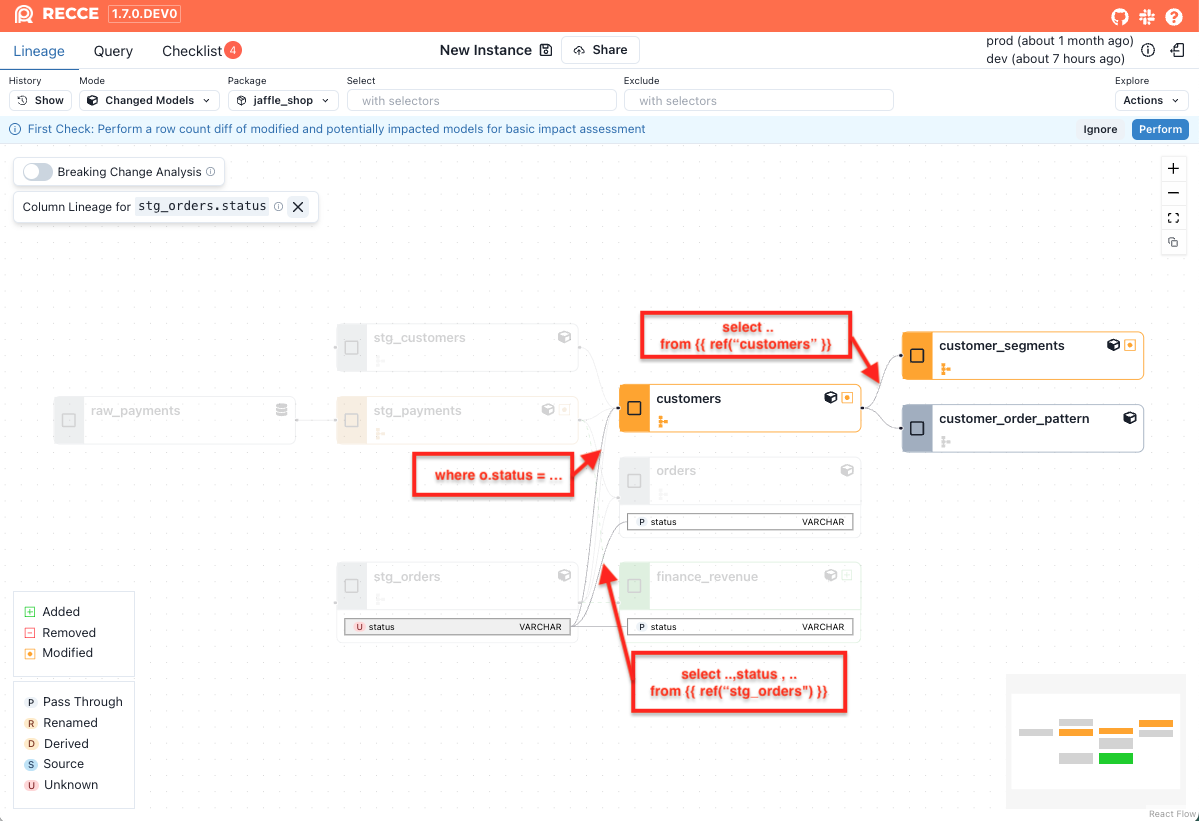Column-Level Lineage
Column-Level Lineage provides visibility into the upstream and downstream relationships of a column.
Common use-cases for column-level lineage are
- Source Exploration: During development, column-level lineage helps you understand how a column is derived.
- Impact Analysis: When modifying the logic of a column, column-level lineage enables you to assess the potential impact across the entire DAG.
- Root Cause Analysis: Column-level lineage helps identify the possible source of errors by tracing data lineage at the column level.
Usage
-
Select a node in the lineage DAG, then click the column you want to view.
-
The column-level lineage for the selected column will be displayed.
-
To exit column-level lineage view, click the close button in the upper-left corner.
Transformation Types
The transformation type is also displayed for each column, which will help you understand how the column was generated or modified.
| Type | Description |
|---|---|
| Pass-through | The column is directly selected from the upstream table. |
| Renamed | The column is selected from the upstream table but with a different name. |
| Derived | The column is created through transformations applied to upstream columns, such as calculations, conditions, functions, or aggregations. |
| Source | The column is not derived from any upstream data. It may originate from a seed/source node, literal value, or data generation function. |
| Unknown | We have no information about the transformation type. This could be due to a parse error, or other unknown reason. |
Impact Radius of a Column
The right side of the Column-Level Lineage (CLL) graph represents the impact radius of a selected column. This view helps you quickly understand what will be affected if that column changes.
What does the impact radius include?
- Downstream columns that directly reference the selected column
- Downstream models that directly depend on the selected column
- All indirect downstream columns and models that transitively depend on it
This helps you evaluate both the direct and downstream effects of a column change, making it easier to understand its overall impact.
Example: Simplified Model Chain
Given the following models, here's how changes to stg_orders.status would impact downstream models:
-- stg_orders.sql
select
order_id,
customer_id,
status,
...
from {{ ref("raw_orders") }}
-- orders.sql
select
order_id,
customer_id,
status,
...
from {{ ref("stg_orders") }}
-- customers.sql
select
c.customer_id,
...
from {{ ref("stg_customers") }} as c
join {{ ref("stg_orders") }} as o
on c.customer_id = o.customer_id
where o.status = 'completed'
group by c.customer_id
-- customer_segments.sql
select
customer_id,
...
from {{ ref("customers") }}
The following impact is detected:
-
orders: This model is partially impacted, as it selects the
statuscolumn directly fromstg_ordersbut does not apply any transformation or filtering logic. The change is limited to thestatuscolumn only. -
customers: This model is fully impacted, because it uses
statusin a WHERE clause (where o.status = 'completed'). Any change to the logic instg_orders.statuscan affect the entire output of the model. -
customer_segments: This model is indirectly impacted, as it depends on the
customersmodel, which itself is fully impacted. Even thoughcustomer_segmentsdoes not directly referencestatus, changes can still propagate downstream via its upstream dependency.



